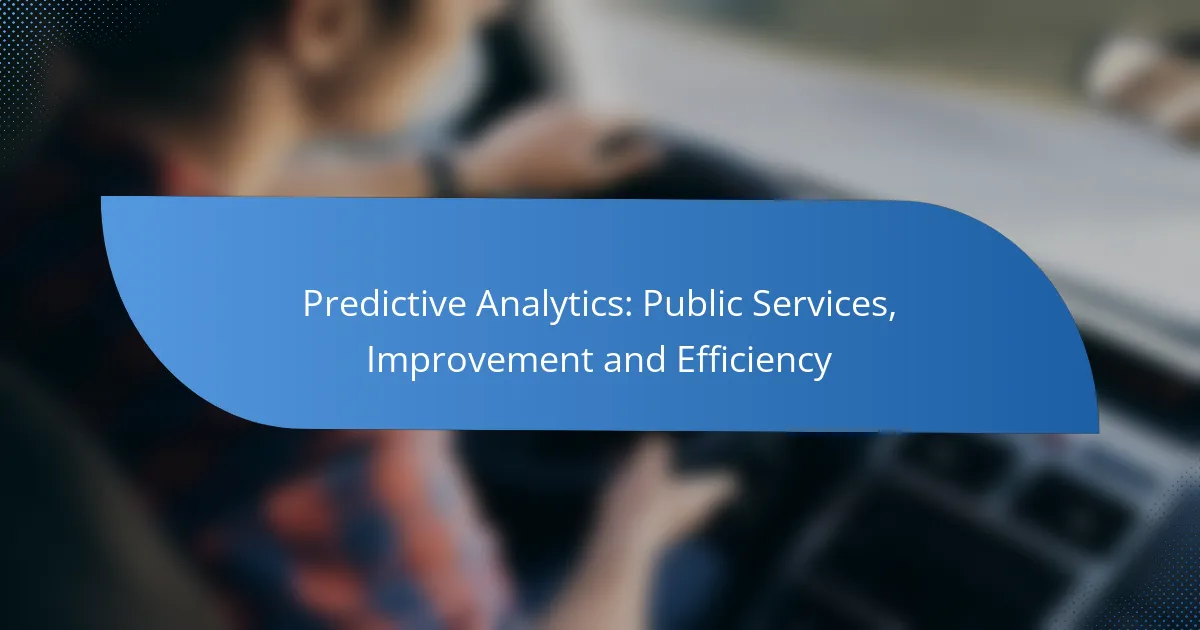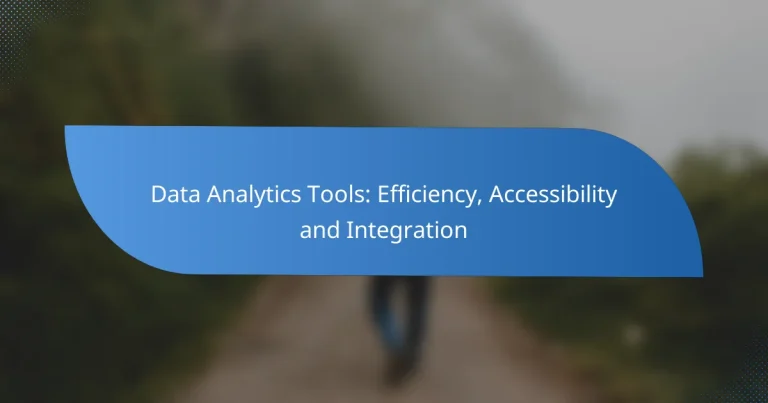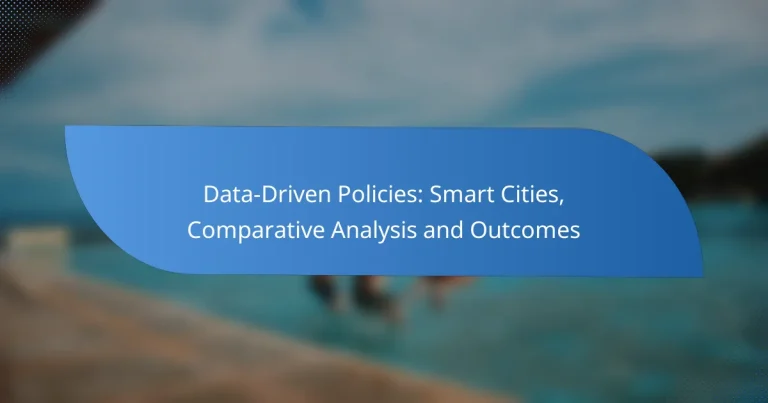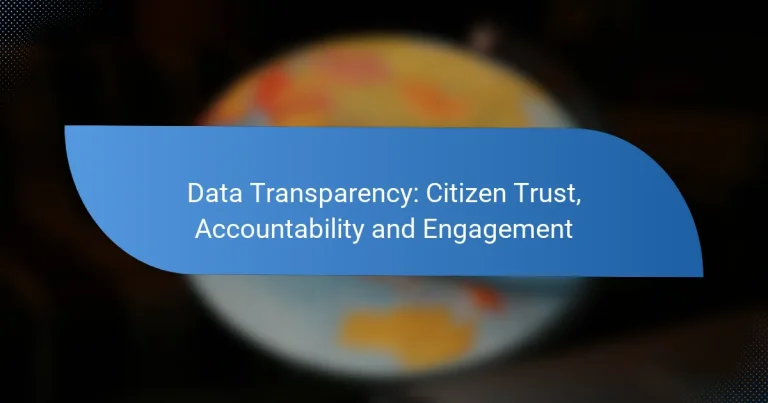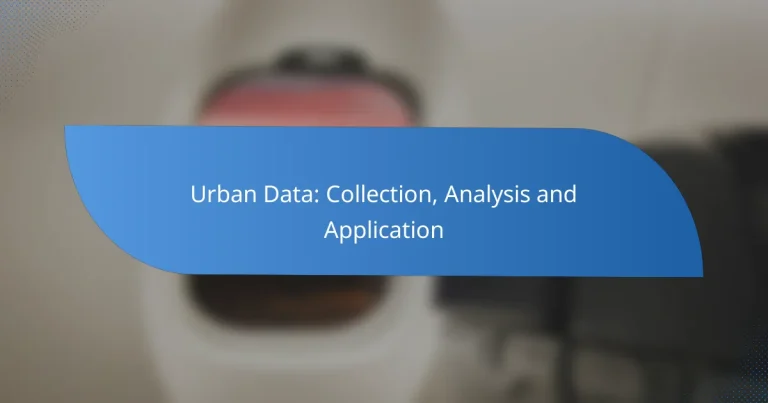Predictive Analytics: Public Services, Improvement and Efficiency
Predictive analytics plays a crucial role in enhancing public services by utilizing data to forecast needs and streamline resource allocation. By analyzing historical trends, agencies can make informed decisions that lead to more efficient operations and improved outcomes for communities. This data-driven approach not only optimizes service delivery but also empowers organizations to proactively address challenges and meet the evolving demands of the public.

How Can Predictive Analytics Improve Public Services?
Predictive analytics enhances public services by leveraging data to anticipate needs and optimize resource use. This approach leads to more efficient operations, better decision-making, and improved outcomes for communities.
Enhanced resource allocation
Predictive analytics allows public service agencies to allocate resources more effectively by forecasting demand. For example, a city might analyze historical data on emergency calls to predict peak times, ensuring that ambulances and police are deployed where they are needed most.
By using predictive models, agencies can minimize waste and ensure that budgets are spent on high-impact areas. This can lead to significant cost savings and improved service delivery.
Data-driven decision making
Data-driven decision making is at the core of predictive analytics, enabling public officials to base their strategies on solid evidence rather than intuition. For instance, analyzing traffic patterns can inform urban planning decisions, helping to reduce congestion and improve transportation efficiency.
Agencies should invest in training staff to interpret data effectively and utilize predictive tools. This empowers decision-makers to respond proactively to emerging trends and challenges.
Predictive maintenance for infrastructure
Predictive maintenance uses data to forecast when infrastructure, such as roads and bridges, may require repairs. By analyzing wear and tear patterns, agencies can schedule maintenance before failures occur, reducing downtime and repair costs.
For example, a public works department might use sensors to monitor the condition of a bridge, allowing them to address issues before they escalate. This proactive approach can extend the lifespan of infrastructure and enhance public safety.
Improved public safety measures
Predictive analytics can significantly enhance public safety by identifying potential crime hotspots and deploying resources accordingly. Law enforcement agencies can analyze crime data to predict where incidents are likely to occur, allowing for targeted patrols.
Additionally, predictive models can assess risks related to natural disasters, enabling emergency services to prepare and respond more effectively. This proactive stance can save lives and reduce property damage.
Optimized service delivery
Optimized service delivery through predictive analytics ensures that public services meet community needs efficiently. For instance, analyzing citizen feedback and service usage can help agencies streamline processes and improve user satisfaction.
Public service providers should regularly review data to identify areas for improvement and adjust their strategies accordingly. This continuous feedback loop fosters a more responsive and effective public service environment.
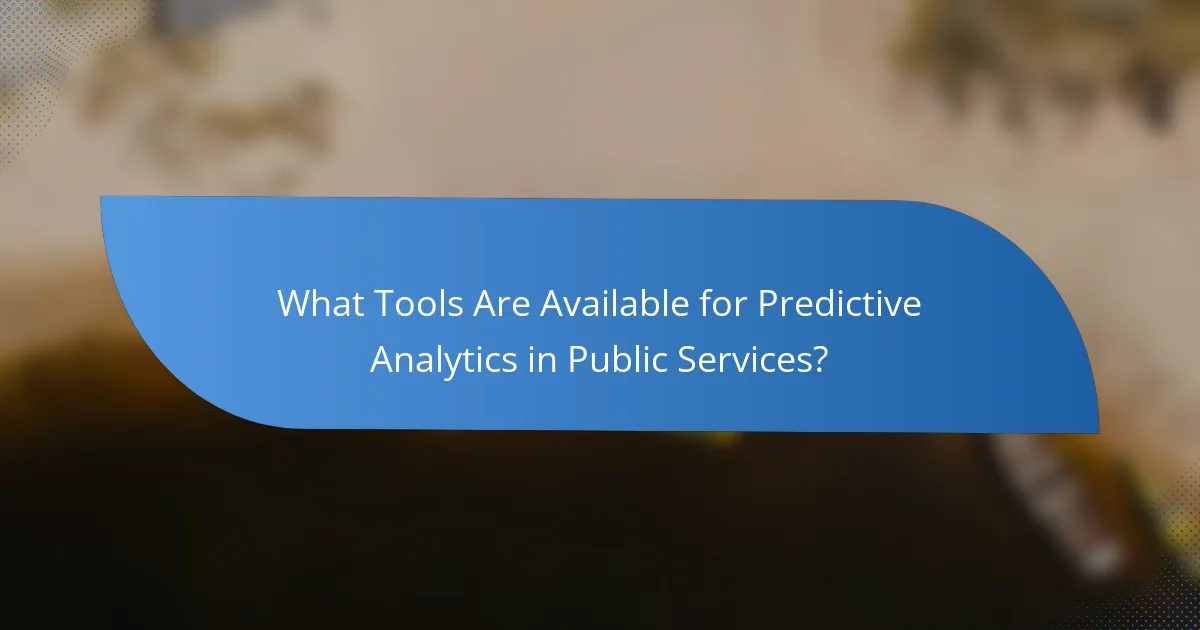
What Tools Are Available for Predictive Analytics in Public Services?
Several powerful tools are available for predictive analytics in public services, enabling organizations to analyze data and forecast outcomes effectively. These tools help improve decision-making, optimize resource allocation, and enhance service delivery.
IBM Watson Analytics
IBM Watson Analytics offers a user-friendly interface that allows public service agencies to analyze large datasets without requiring extensive technical expertise. It uses natural language processing to interpret queries, making it accessible for non-technical users.
Key features include automated data visualization and predictive modeling capabilities. Agencies can leverage these tools to identify trends, forecast demand for services, and improve operational efficiency.
Microsoft Azure Machine Learning
Microsoft Azure Machine Learning provides a comprehensive platform for building, training, and deploying predictive models. Public service organizations can utilize its robust machine learning algorithms to analyze historical data and predict future trends.
This tool supports various programming languages and integrates seamlessly with other Microsoft services, making it versatile for different analytical needs. Agencies should consider the cost, which can vary based on usage, and ensure they have the necessary data governance in place.
Tableau
Tableau is a powerful data visualization tool that enables public services to create interactive dashboards and reports. It allows users to visualize complex datasets easily, facilitating better insights and informed decision-making.
With its drag-and-drop interface, Tableau is suitable for users at all skill levels. Public agencies can use it to track key performance indicators (KPIs) and visualize trends in service delivery, helping to identify areas for improvement.
Google Cloud AI
Google Cloud AI offers a suite of machine learning tools that can be utilized by public service organizations to enhance their predictive analytics capabilities. It provides pre-trained models and tools for custom model development, allowing agencies to tailor solutions to their specific needs.
Agencies can benefit from Google’s extensive data processing capabilities, which can handle large datasets efficiently. It is essential to consider data privacy regulations when using cloud-based solutions, ensuring compliance with local laws and standards.
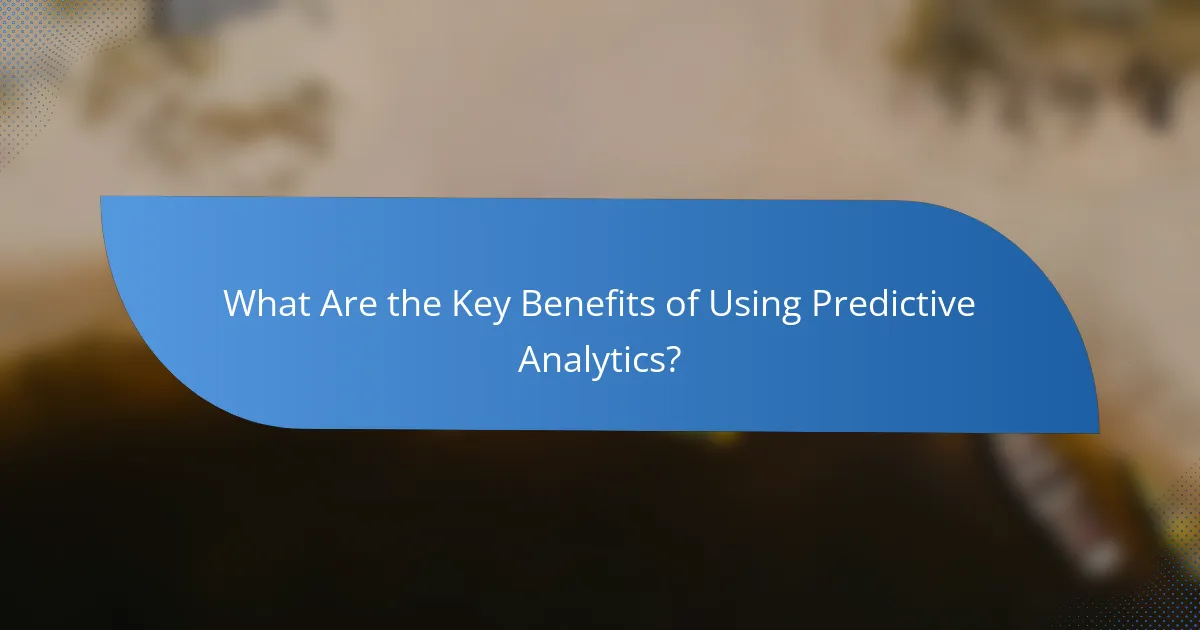
What Are the Key Benefits of Using Predictive Analytics?
Predictive analytics offers significant advantages for public services by enhancing decision-making and operational effectiveness. By analyzing historical data, agencies can anticipate future trends, leading to improved resource allocation and service delivery.
Increased operational efficiency
Predictive analytics streamlines processes by identifying patterns and forecasting demands. For example, a city might analyze traffic data to optimize signal timings, reducing congestion and improving travel times.
By leveraging data-driven insights, public agencies can allocate resources more effectively, ensuring that personnel and equipment are deployed where they are most needed. This proactive approach minimizes downtime and enhances overall productivity.
Cost savings
Implementing predictive analytics can lead to substantial cost reductions for public services. By anticipating maintenance needs, agencies can schedule repairs before issues escalate, avoiding costly emergency interventions.
Additionally, predictive models can help in budget forecasting, allowing for more accurate financial planning. For instance, a municipality might use analytics to predict utility consumption, leading to better management of energy resources and lower operational costs.
Improved citizen engagement
Predictive analytics enhances citizen engagement by enabling tailored communication and services. By analyzing demographic data and service usage patterns, public agencies can provide personalized outreach, ensuring that citizens receive relevant information and support.
For example, a local government could use predictive models to identify neighborhoods that may benefit from specific programs, such as health initiatives or community events, fostering stronger connections with residents.
Enhanced service quality
By utilizing predictive analytics, public services can significantly improve service quality. Agencies can identify potential service disruptions and address them proactively, ensuring that citizens receive timely and effective assistance.
Moreover, predictive insights can guide training and development for staff, ensuring that they are equipped to meet the evolving needs of the community. This focus on continuous improvement leads to higher satisfaction rates among citizens and a more responsive public service environment.
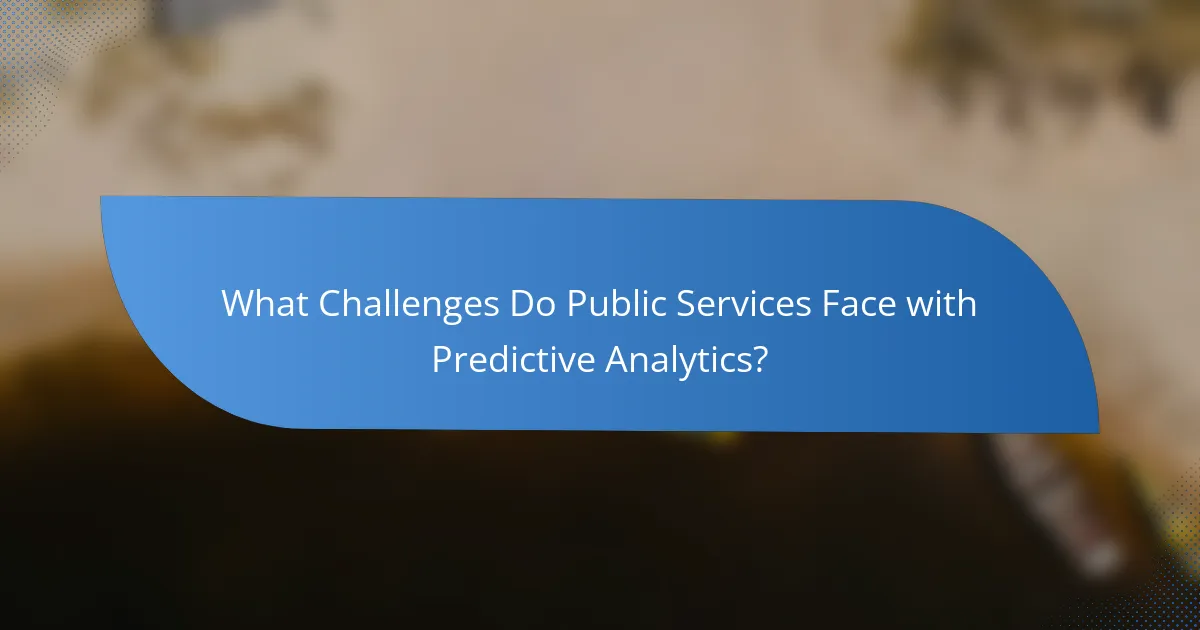
What Challenges Do Public Services Face with Predictive Analytics?
Public services encounter several challenges when implementing predictive analytics, including data privacy concerns, integration with existing systems, and skill gaps in the workforce. Addressing these issues is crucial for maximizing the benefits of predictive analytics in enhancing service delivery and efficiency.
Data privacy concerns
Data privacy is a significant challenge for public services using predictive analytics. Organizations must ensure compliance with regulations like the General Data Protection Regulation (GDPR) in Europe, which mandates strict guidelines on data collection and usage. Failure to adhere to these regulations can lead to hefty fines and loss of public trust.
To mitigate privacy risks, public services should implement robust data anonymization techniques and secure data storage solutions. Regular audits and transparency in data usage can also help build public confidence in how their data is handled.
Integration with existing systems
Integrating predictive analytics tools with existing public service systems can be complex and resource-intensive. Many legacy systems may not be compatible with modern analytics platforms, leading to potential data silos and inefficiencies. A thorough assessment of current infrastructure is essential before implementation.
Public services should consider phased integration strategies, starting with pilot projects that allow for gradual adaptation. Collaborating with IT specialists can streamline the integration process and ensure that new tools complement existing workflows effectively.
Skill gaps in workforce
Many public services face skill gaps in their workforce when it comes to utilizing predictive analytics. Employees may lack the necessary training in data analysis, machine learning, or statistical methods, hindering the effective use of these technologies. Investing in training programs is vital to bridge these gaps.
Public services can partner with educational institutions or offer in-house training sessions to enhance their staff’s analytical skills. Additionally, hiring data scientists or analytics specialists can provide immediate expertise and help establish a culture of data-driven decision-making.
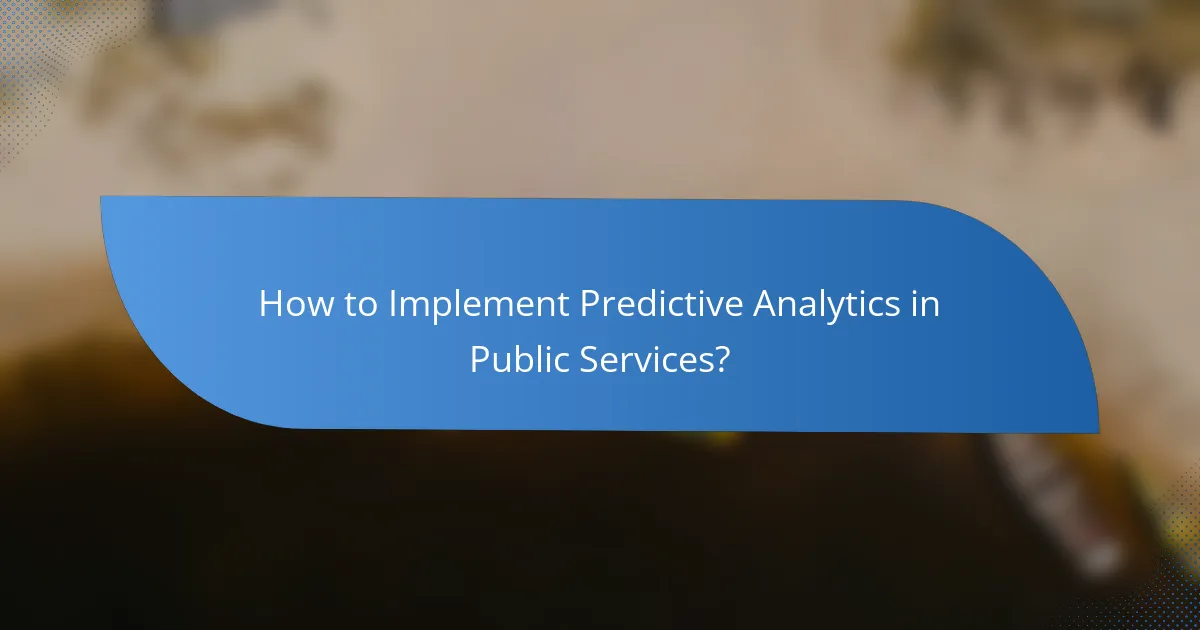
How to Implement Predictive Analytics in Public Services?
Implementing predictive analytics in public services involves a systematic approach to harness data for improving efficiency and decision-making. Key steps include defining objectives, selecting appropriate data sources, and applying analytical techniques to forecast outcomes.
Define objectives and goals
Clearly defining objectives and goals is the first step in implementing predictive analytics. This involves identifying specific problems that predictive models can address, such as reducing response times in emergency services or optimizing resource allocation in public health.
Establish measurable targets to evaluate success, such as aiming for a 20% reduction in service delivery times or improving citizen satisfaction ratings. Align these goals with the broader mission of the public service organization to ensure relevance and support.
Engage stakeholders in this process to gather diverse perspectives and ensure buy-in. This collaboration can help refine objectives and create a shared vision for the analytics initiative.
